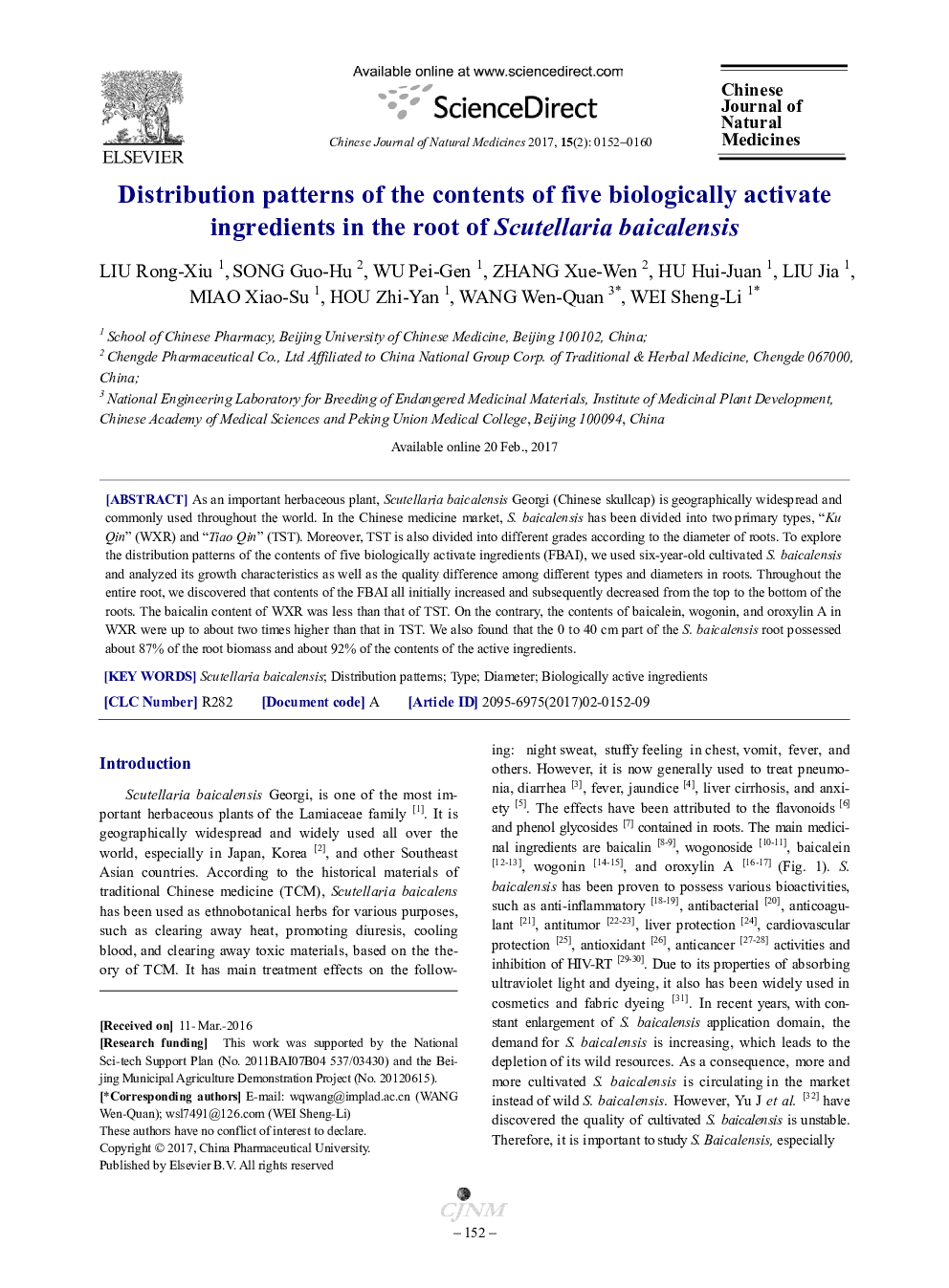| Article ID | Journal | Published Year | Pages | File Type |
|---|---|---|---|---|
| 8527603 | Chinese Journal of Natural Medicines | 2017 | 9 Pages |
Abstract
As an important herbaceous plant, Scutellaria baicalensis Georgi (Chinese skullcap) is geographically widespread and commonly used throughout the world. In the Chinese medicine market, S. baicalensis has been divided into two primary types, “Ku Qin” (WXR) and “Tiao Qin” (TST). Moreover, TST is also divided into different grades according to the diameter of roots. To explore the distribution patterns of the contents of five biologically activate ingredients (FBAI), we used six-year-old cultivated S. baicalensis and analyzed its growth characteristics as well as the quality difference among different types and diameters in roots. Throughout the entire root, we discovered that contents of the FBAI all initially increased and subsequently decreased from the top to the bottom of the roots. The baicalin content of WXR was less than that of TST. On the contrary, the contents of baicalein, wogonin, and oroxylin A in WXR were up to about two times higher than that in TST. We also found that the 0 to 40 cm part of the S. baicalensis root possessed about 87% of the root biomass and about 92% of the contents of the active ingredients.
Related Topics
Health Sciences
Medicine and Dentistry
Complementary and Alternative Medicine
Authors
Rong-Xiu LIU, Guo-Hu SONG, Pei-Gen WU, Xue-Wen ZHANG, Hui-Juan HU, Jia LIU, Xiao-Su MIAO, Zhi-Yan HOU, Wen-Quan WANG, Sheng-Li WEI,
